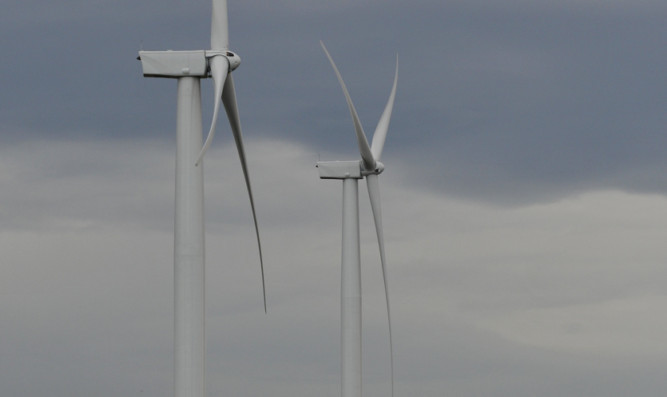Fife’s Labour administration has been accused of performing a U-turn on wind- farms as it moves to cash in on the renewable energy industry.
Before its return to power last May the party sought a moratorium on wind turbine planning applications.
But now it wants to erect its own turbines at 15 locations around the region in a move which could earn it £20 million.
The SNP’s planning spokesman Councillor John Beare claimed the administration has cast aside its own promises.
He said: “You really couldn’t make this up. In its manifesto last year Labour promised a moratorium on wind turbine applications and now it wants to examine erecting 15 council-owned windfarms.”
The executive committee agreed on January 15 that detailed feasibility studies should be conducted on the suitability of the locations, which have yet to be revealed, for either one or two turbines.
On the same day consultation began on the Fife Plan, which will map out areas across the region deemed suitable for wind- farms.
Mr Beare said: “It [the administration] has shown a total disregard not only for its own promises but for the consultation it promised with the people of Fife.
“Indeed Councillor Rowley himself on May 24 in the council chamber said ‘we must tackle the tidal wave of wind turbine applications that threatens to swamp our landscape and our space with industrial structures’.
“We clearly need a mix of energy generation in Scotland and the Scottish Government has done a great deal to assist in that regard, but to have a council administration which changes its mind on such a regular basis and so wilfully casts aside its own promises is deeply disturbing and does not bode well for the residents or businesses of Fife in the months and years ahead.”
However, deputy leader of the administration Councillor David Ross insisted Labour’s position had been consistent.
He said: “We need to be clear about where these wind developments go, we need to give communities their say and communities need to have much greater benefit from them.
“A map has been produced of where we think turbines should be going and where they shouldn’t be and that is out for consultation now.
“Our planning applications will be dealt with using the same criteria and on the same basis as those for commercial turbines.
“Our concern has always been that communities are getting a raw deal they get peanuts in terms of community benefit when commercial firms are making significant profits.
“If the council goes ahead with these turbines in appropriate locations they will bring income to the council which will protect services for everyone in Fife and we are looking to ensure the specific communities affected will benefit.”
Over the last three days, Fifers have been having their say on where windfarms should or should not be built in the region.
Drop-in sessions were held in Inverkeithing, Dunfermline and Cupar on Monday, Tuesday and Wednesday.
More will be held next week and the week after elsewhere.
The consultation will help shape the Fife Local Development Plan which will replace the kingdoms St Andrews and East Fife, Mid Fife and Dunfermline and West Fife local plans by 2016.
A map has been produced showing where it is thought there is capacity for windfarms.
